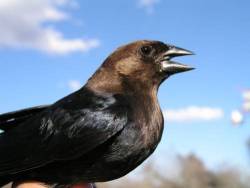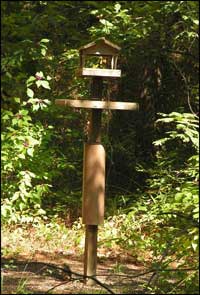Wildlife: Cowbird Conundrum
Thursday, November 1st, 2012
Brown-headed Cowbird
This is Passport to Texas Supported by the Wildlife and Sport Fish Restoration Program
The brown-headed cowbird migrated with bison across the Great Plains, and because it’s hard to raise a family on the road, cowbirds laid their eggs in other birds’ nests; host birds unwittingly raised cowbird young.
12—The problem with the cowbird eggs is that normally they’re big eggs; they hatch earlier than the host eggs do; and they’re very vocal and hungry and beg for food.
Biologist, Marsha May, says the cowbird hatchlings out compete the host’s offspring for food, starving them out, and reducing populations of that species. Back when bison roamed, cowbirds didn’t have quite the same impact.
15—Black-capped vireos, which are an endangered species now, evolved where if they were parasitized by a brown-headed cowbird, they would leave that nest and re-nest – start a new nest. Well, if the cowbirds had already moved through, that would have worked.
Without bison, cowbirds hang with cows. Because cows are fenced in and don’t migrate, neither do cowbirds.
19—They’re parasitizing all the birds in that area – their nests – and they’re having a major impact on some species like the black capped vireo, because the black-capped vireo keeps re-nesting and that’s wasting a lot of energy, and if it’s constantly being parasitized, then no young will be reproduced at all that year.
We’ll have more on cowbirds tomorrow.
That’s our show… we receive support from the Wildlife and Sport Fish Restoration Program… funded by your purchase of fishing and hunting equipment and motor boat fuels.
For Texas Parks and Wildlife…I’m Cecilia Nasti.






 Passport to Texas is a
Passport to Texas is a  Passport to Texas is made available by:
Passport to Texas is made available by: